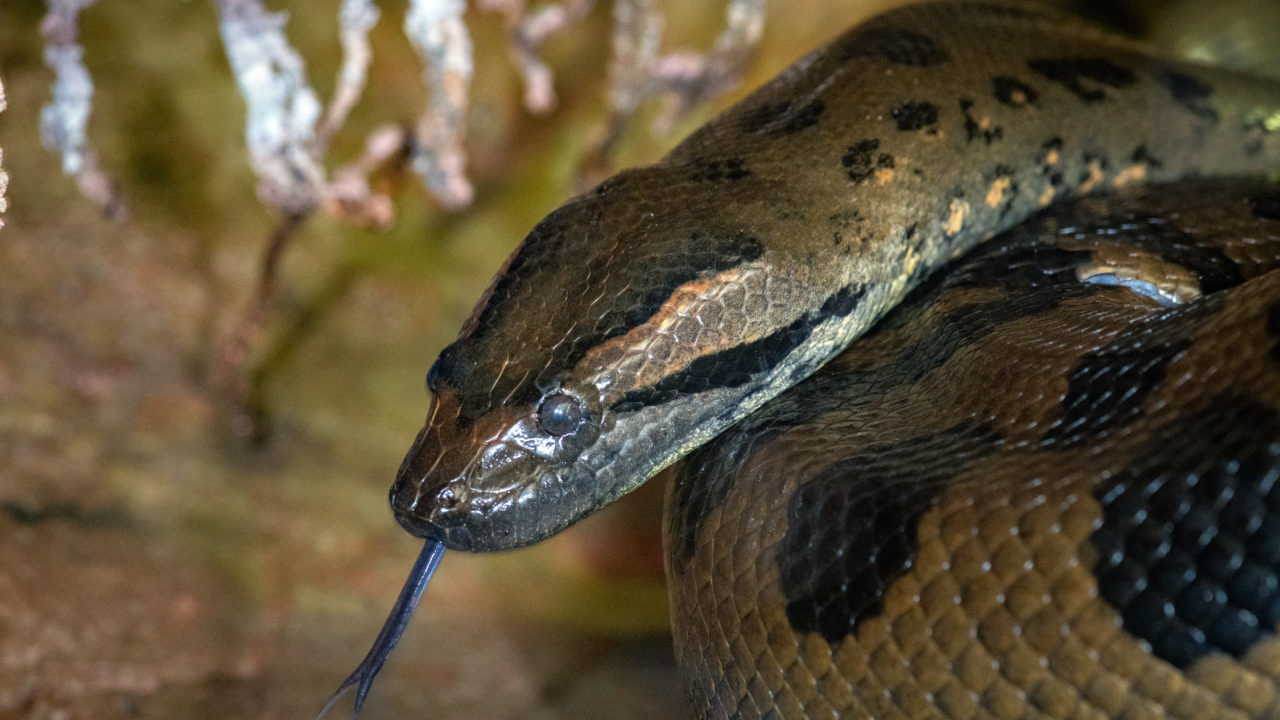
Large anacondas can go for months without feeding after eating large prey items. They ambush prey by hiding below the water's surface and strike when a prey animal passes by or stops to drink. Anacondas feed on a wide range of animals including fish, amphibians, birds, mammals including deer, peccaries, capybaras, and other reptiles such as caimans and turtles. They are found across much of South America east of the Andes as far south as Paraguay and southern Brazil. The largest recorded anaconda measured 5.2 m (17 ft) and weighed 97.5 kg (215 lbs). True to its in-game description, the Green Anaconda is the largest snake in the world in terms of weight at 30-70 kg (66 - 154 lb) and reaches average lengths of 3 - 5 m (9 - 16 ft), outclassed in length by the Reticulated Python. The Green Anaconda ( Eunectes murinus) is a species of snake introduced in Freshwater Frenzy. Anacondas are non-venomous and kill their prey by strangulation." Yes, while they are large enough to eat a human the instances of anacondas attacking humans are pretty rare because of the low human population in the areas where anacondas live."The world's heaviest snake hails from South American swamps and streams, where its enormous size makes water living easier than movement on the ground. Instead, constrictors wrap their bodies around their prey and squeeze until it stops breathing Can a Green Anaconda Eat a Human?Ĭontrary to the urban legend or pop culture belief, there are no confirmed reports of a green anaconda, or any anaconda, killing a human. The green anacondas don't kill prey by delivering venom through a bite. No! Like all boas, it is a non-venomous constrictor. However, the world record for longest snake goes to the reticulated python.ĭid You Know? The longest and heaviest verified Green anaconda specimen on record was a female anaconda coming in at 17 feet in length and weighing 214 pounds! Are Green Anacondas Venomous? The green anaconda is recognized as the largest snake species native to the Americas.

As far as weight, a typical adult can average between 70 to 150 pounds. However the average adult female comes in around 15.5 feet and adult males average 9 feet.

The green anaconda is considered one of the largest and heaviest snakes in the world or snake species on the planet. Basically anywhere in the ttropical rain forests of the Amazon.Īre Green Anacondas the Largest in the World? Green Anacondas live in swamps, marshes, and slow-moving rivers or streams. Green anacondas are native to South America east of the Andes, and can be found in several countries including Colombia, Venezuela, Peru, Brazil, the island of Trinidad, and as far south as northern Paraguay. Green Anacondas can live in captivity up to 30 years with proper care! However, in the wild their lifespan is a lot short, coming in at about 10 years on average. If they have the ability to overpower it, they’ll eat large fish, birds, rodents (Capybaras) and other reptiles. Since green anacondas are primarily aquatic snakes, they’’ feed on a wide variety of prey. Green anacondas are very solitary snakes and prefer to be on their own most of their lifespan. They are also known to bury or burrow in mud patches, and they’ll go dormant just resting in the piles of mud. They are known to “float” at the surface of the water, where their snout is only visible. These snakes are pretty nocturnal, so they spend the majority of their day swimming in the water. The anaconda's jaw bones are loosely connected which allows them to open their jaws such a wide distance in order to swallow prey larger than their heads.

#GREEN ANACONDA SIZE FULL#
Their eyes are set high on the head which allows the snake to see out of the water while swimming without exposing its full body. They have very narrow heads compared to their body size.

Green anacondas have a beautiful color pattern with an olive green background overlaid with black design or patches along the body. A member of the Boidae family of snakes, their scientific name Eunectes comes from the Greek word for “good swimmer” The green anaconda (Eunectes murinus), also goes by a few different names including the giant anaconda, common anaconda, or common water boa.


 0 kommentar(er)
0 kommentar(er)
